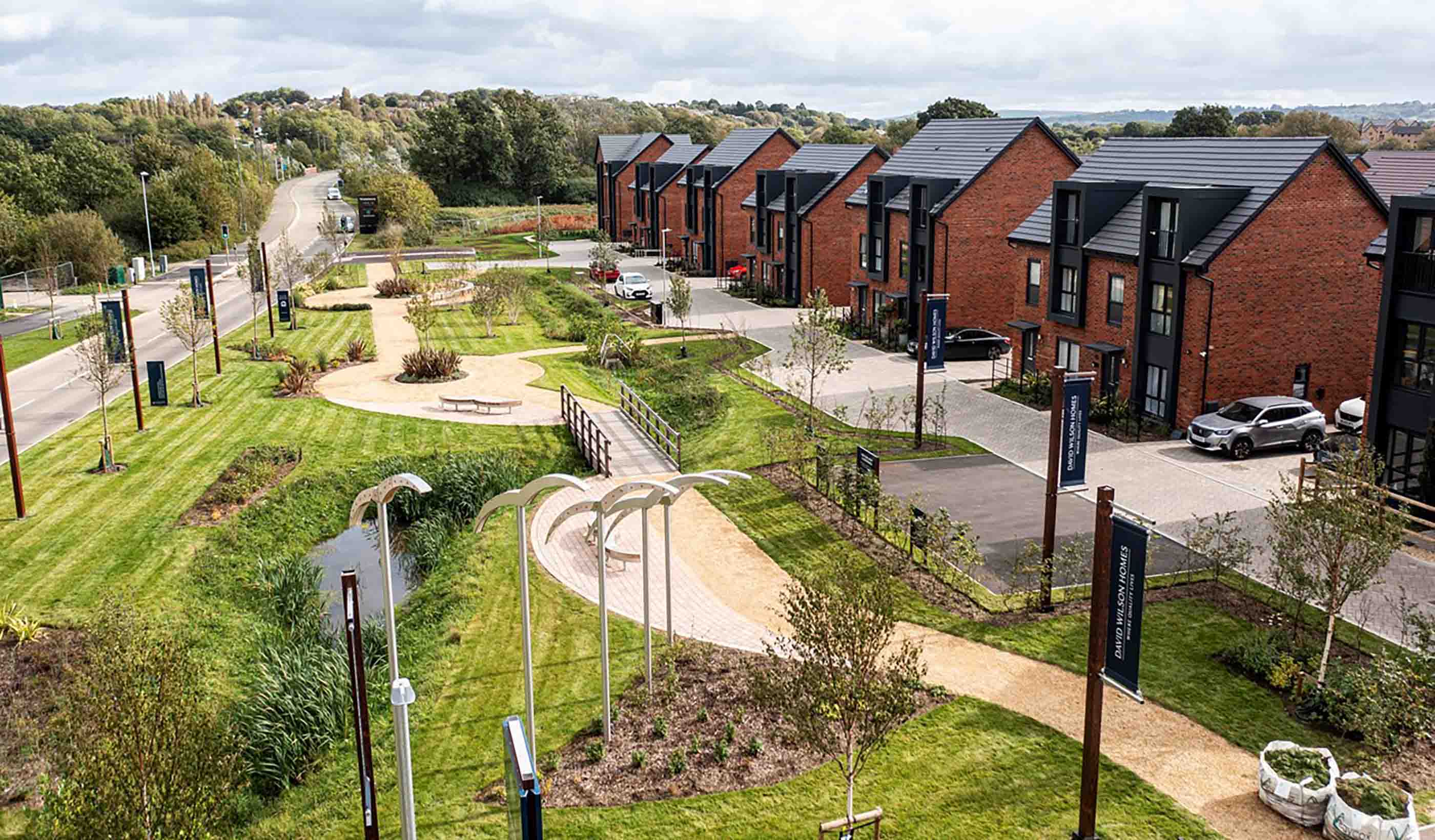The new NPPF: Progress, potential pitfalls, and solutions
September 30, 2024
September 30, 2024
Clarifying and derisking the planning process is important to spur investment
Cast your mind back to the UK in March 2012. London was about to host the Summer Olympics. The Queen was due to celebrate her Diamond Jubilee. And among these milestones, a new National Planning Policy Framework (NPPF) document was introduced.
The new NPPF replaced countless pages of guidance and policy statements. It aimed to simplify and speed up planning—with mixed results. In more recent years, growing anti-development sentiment has bled into policy, and frequent tinkering with the NPPF has caused ongoing uncertainty, impacting local plan-making and decision-taking. Now, the new Labour government has put forward proposed changes to the NPPF at the centre of wider planning reforms.
These amendments have the potential to reform the way we plan for and deliver new development and supporting infrastructure. They could address the housing crisis, enable the release of low quality green belt land (if necessary to meet housing needs), encourage design codes, and facilitate a more supportive approach to the delivery of modern commercial development.
We urgently need to move forward with targeted intervention to solve the issues the UK faces, and the Labour government has been consulting on the best way to do this.
Stantec has submitted a formal response to this consultation, drawing on the experience of our teams across many specialisms to highlight positives, identify where proposed changes may have unintended consequences, and suggest further changes.
We support the government’s national growth agenda and their actions to remove challenges in the planning system. At a time when public finances are strained and private funding for development is badly needed, clarifying and derisking the planning process is an important way to spur investment.
Yet the proposals can and should be amended further to support the government’s agenda.
Here, I offer an overview of the key points we have made to government to support the new NPPF.

We must bring forward development centred around sustainability and resilience.
Housing is front and centre of Labour’s policy agenda, not just through the proposed new NPPF, but also the pledge for a ‘generation of new towns’ and a national target of 1.5 million homes in this parliament. The UK is facing an unprecedented housing crisis, and planning policy is one of the main reasons delivery has fallen short of need and demand.
We welcome the government’s proposed introduction of fixed housing targets that must be accommodated, working with neighbouring authorities if required, as a demonstration of their commitment to tackling the housing crisis. Local plans are helpful tools, but planning and delivery is slow, and the housing crisis is urgent. It could take many years for local plan universal coverage across England, with years of transition to plan properly and meet the goal of 370,000 homes a year in the proposed Local Housing Need figures. Alongside these reforms, government needs to look for ways to incentivise delivery in the short term, even where up-to-date local plans are not yet in place.
One way the new NPPF looks to achieve housing delivery is the proposed ‘grey belt’ designation. This identifies lower quality green belt land, including previously developed sites, and makes it easier to build there. We back this liberalisation of green belt policy by the new NPPF, especiallyin the context of some larger housing and commercial schemes, but detail is needed. Brownfield land less often exists on the scale needed for these bigger proposals, yet they are vital. Larger sites allow for the creation of whole new communities and are important drivers of the modern economy like data centres.
Success here relies on the government adopting a consistent approach. The same criteria and methodology should be applied to identify grey belt land across the country. Equally, it must ensure that cumulative development does not undermine the fundamental function of the green belt.
There are currently some quirks in the draft. We identified that in specific cases, the new NPPF could be interpretated as prioritising the release of green belt land over safeguarded land already earmarked for longer term development. Such points are easy to address, and we expect them to be.
In our response, we have also raised that the new NPPF’s ‘Golden Rules for Green Belt Release’ could and most likely would have unintended consequences in lower value areas of the country and in particular parts of the market.
For example, the later living sector is currently reliant on green belt sites. The locations often better suit the low density, rural style of development the later living sector delivers. Yet the viability of later living schemes cannot realistically accommodate 50 percent affordable housing in most cases. This is set to be a requirement under the new NPPF ‘Golden Rules’ and could turn the sector on its head.

With an aging population, safeguarding the later living sector must be a priority.
Attempts to simplify a process can result in a loss of some nuance and clarity. This has been a historic challenge that the new NPPF has an opportunity to address.
In some cases, the issue is terms that are over-specific or challenging to define. So much so that they slow down the planning process. We support the removal of the terms ‘beauty’ and ‘beautiful’ from the guidance on these grounds. Instead, it’s better to focus on quality—and how government and the sector can work more closely in partnership to define and deliver quality placemaking. A good first step is retaining and reinforcing the references to ‘well-designed’ buildings and places, because this term is clearly defined and measurable through the National Model Design Code and National Design Guide.
Similarly, while it is welcome that the new NPPF introduces specific types of commercial development that will be prioritised, this may be too limiting. The draft focuses on ‘laboratories, gigafactories, data centres, and digital infrastructure’. It could instead broaden some of these terms to reference the ‘innovation sector’ which would offer even more opportunity for proposals that support the national growth agenda. This might include projects focused specifically on research and development—or even technologically advanced film studios.
There is also a lack of clarity over the new NPPF’s ‘intervention criteria’ for local plans. We have suggested a modest expansion of the criteria and would encourage ministers and the Ministry of Housing, Communities and Local Government (MHCLG) to be ready and willing to use this power. Arguably, there are areas where such action is already justified, given the many years of stasis witnessed.
With central government taking a more interventionist attitude to planning, it is essential that the criteria for this are defined to avoid confusion over process or responsibility. Clarity will help preserve the authority of plan makers while still supporting overall delivery objectives.
One of the wider questions surrounding the new NPPF is how it will fit together with other new policy such as local growth plans and a national industry strategy. Given how central the new NPPF will be to all these broader objectives, it would have been beneficial to bring them all forward together in a more coordinated way for sector review.
We support Labour’s revisions to the sustainable transport section of the new NPPF. However, there are places they could go further. Some of our suggested changes may appear minor and subtle. But the implications they could have are potentially significant, especially if supported by additional clarity and guidance.
While not a new concept, the newly proposed vision-led approach to transport planning will help embed the importance of transport deeply in government policy. The old ‘predict and provide’ approach often resulted in more highway infrastructure. The new NPPF is a step in the right direction—thinking more holistically about the way we move between places and bringing forward development centred around sustainable transport.

A vision-led approach to transport planning supports healthier and more sustainable journeys.
It is important that the vision-led approach is incorporated within the local plan making stage to avoid ambiguity. This would support the local plans from initial stages with a holistic strategy for how sustainable transport schemes can come forward.
Fundamentally, the narrative of transport planning and assessments needs to shift away from prioritising the private car, as our Bridging the Gap research project outlined. It should be about the impact of the transport network on people, air quality, carbon emissions, economy, quality of life, and health. The new NPPF language around testing scenarios means that shifts to sustainable modes of transport are included. This is an excellent step, and we hope over time this gives fewer reasons to refuse developments on highways grounds while placing greater emphasis on green and active travel routes.
While there are aspects still to be smoothed out, the new NPPF provides a welcome shift in national policy for the development industry and planning profession. It’s clear from the draft changes that the government has been listening to the sector’s suggestions over time and has identified mechanisms to remove major blockages to growth. These steps will help derisk the planning process for those looking to invest.
Equally, success will rely on more than just this new NPPF. It will be part of a landscape of policy initiatives, and a new planning and infrastructure bill. We hope the government will continue this collaboration with industry and openness to recommendations.
Time is of the essence, and with five years ahead of this administration, now is the moment to make the changes and commit to staying on this new course so the sector can invest and plan.
If you would like to read our response in full, get in touch with me directly.